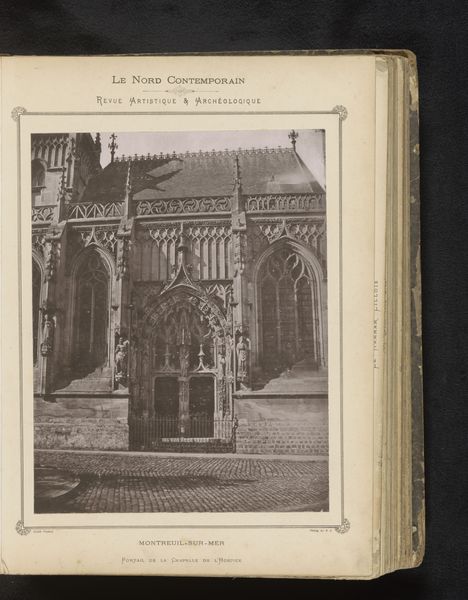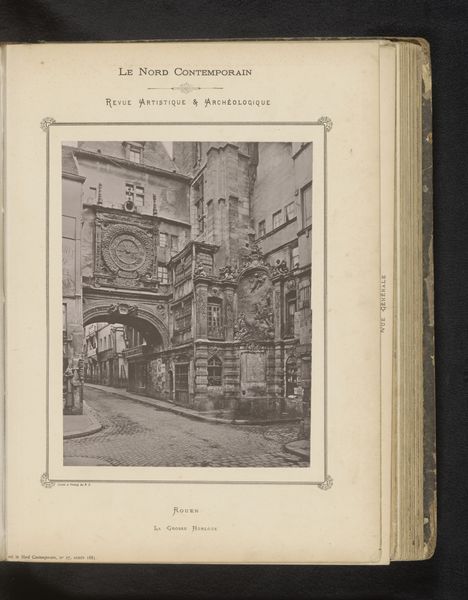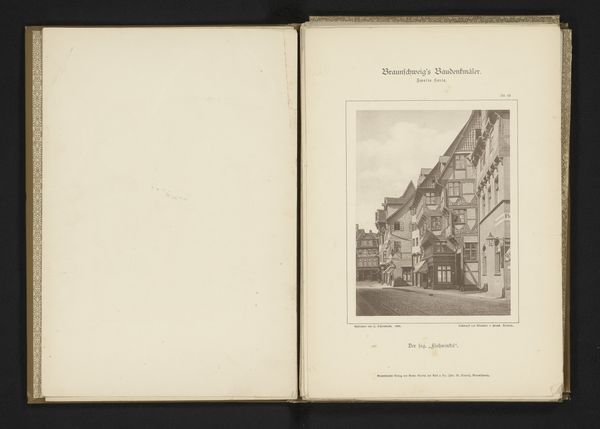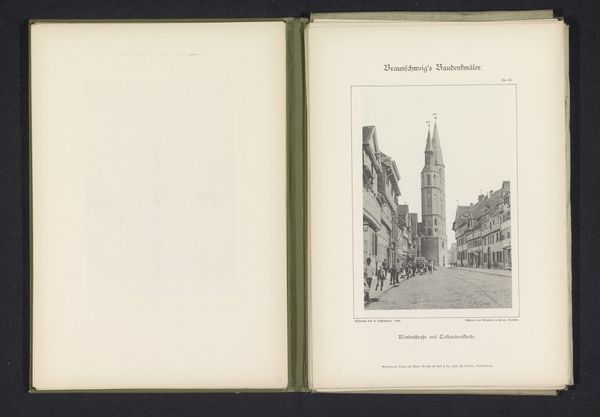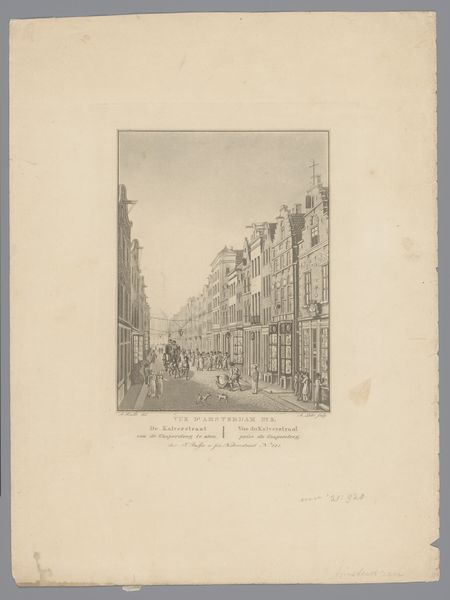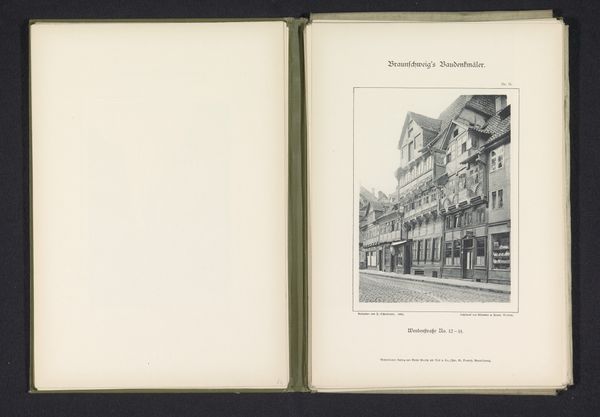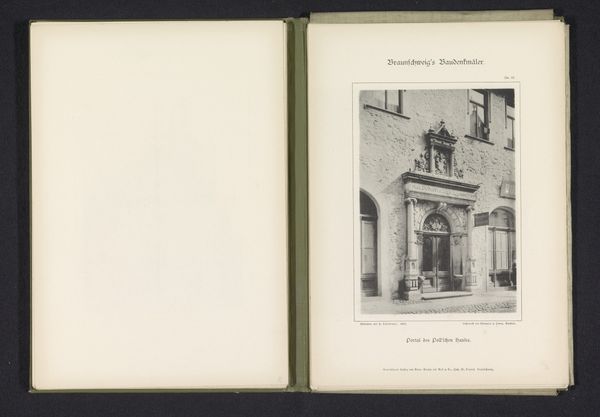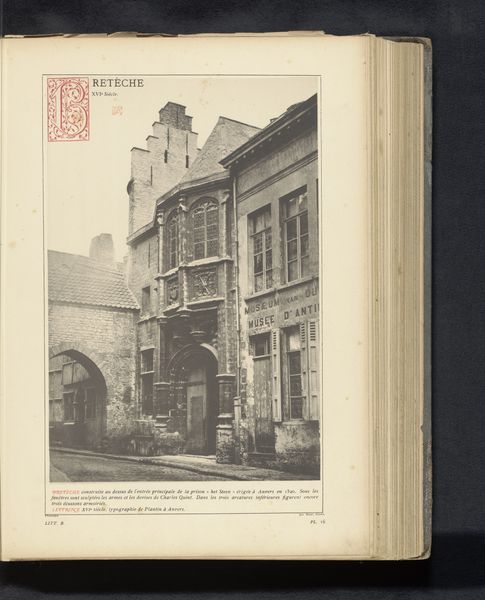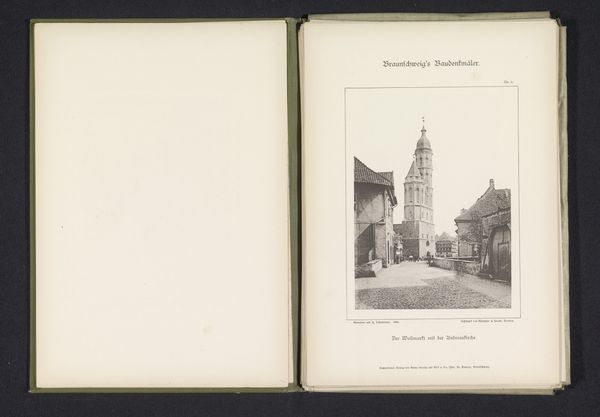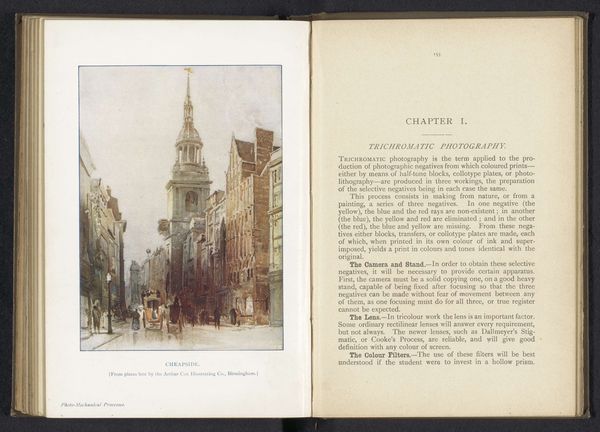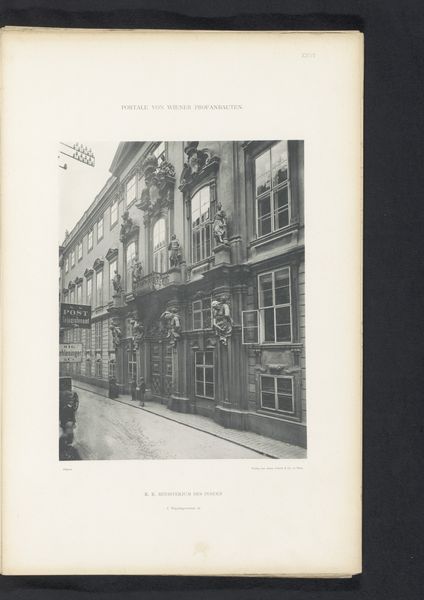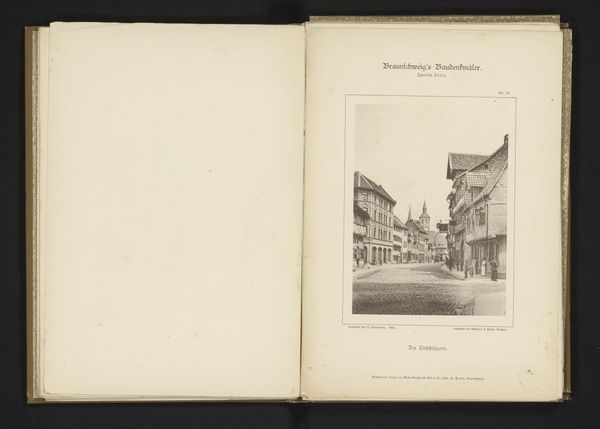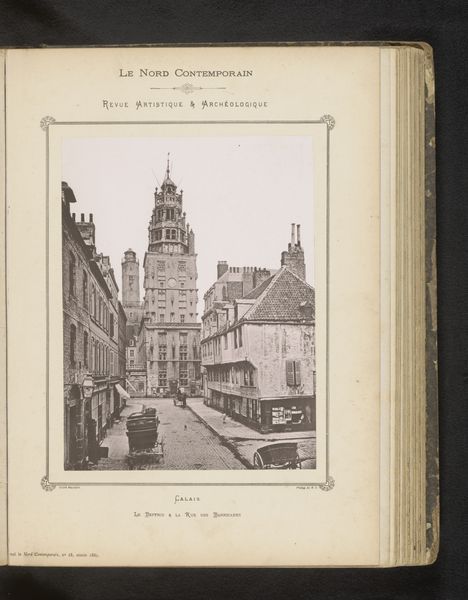
print, photography
#
dutch-golden-age
# print
#
street-photography
#
photography
#
photojournalism
#
cityscape
#
street
Dimensions: height 222 mm, width 162 mm
Copyright: Rijks Museum: Open Domain
Curator: This print, entitled "Gezicht op de Rue Flamande in Brugge," was created before 1885. What immediately strikes you about it? Editor: The stark contrast, almost monochromatic, gives it a haunting beauty. It evokes a sense of profound quiet. You can almost hear the echoes of the past. Curator: It's compelling how this single photographic print encapsulates the emergence of street photography, a genre so closely tied to capturing evolving urban spaces and its intersections with labor. We see it also tied to photojournalism’s intent on showing "the real". What socioeconomic narratives might we unpack? Editor: Absolutely. I’m drawn to the meticulous process behind creating a photograph in this era. Consider the heavy equipment, the long exposure times required, the darkroom techniques... Each step involved skilled labor and material resources. The buildings too! Look at their size and decoration. What kind of work must have gone into this area for the wealthy and not for the majority. Curator: And what does it mean to depict the Flemish street in this specific manner, framed as a progressive, emerging gaze onto society. This isn't merely about architectural record; it’s about situating the viewer within a particular social and political reality, particularly when one considers othered members of society and laborers that might be deliberately excluded. Editor: The stillness almost seems staged, or that things must have stopped just for the picture. The cobblestone street seems vacant, despite signs of life within the buildings lining it. One wonders about the daily routines, the interactions, the economic activities that filled these spaces. How many lives intersected here on a daily basis? Curator: Precisely. What perspectives are we missing, and what stories remain untold within this seemingly neutral cityscape? What impact will it have and did have on photographic movements for centuries to come? Editor: Indeed. Reflecting on the tangible work invested and the historical setting portrayed really highlights art's embeddedness in material conditions and class struggle. Curator: Agreed. Exploring art this way brings richer discussions about societal transformation and social dynamics than what may immediately meet the eye. Editor: This journey has enriched how I view "Gezicht op de Rue Flamande in Brugge". The layers peeled away show more depth than initially visible.
Comments
No comments
Be the first to comment and join the conversation on the ultimate creative platform.

